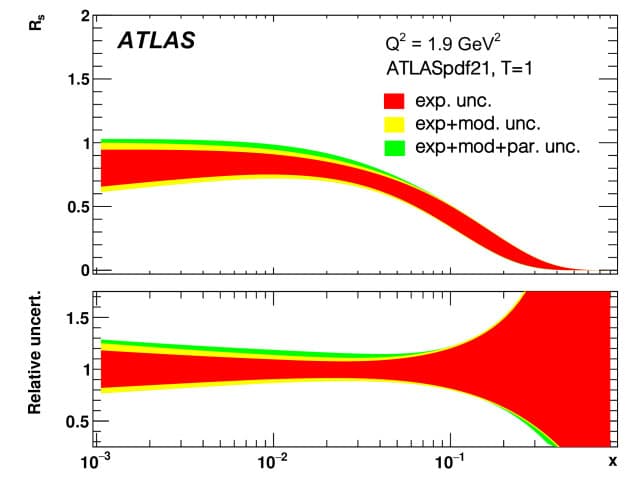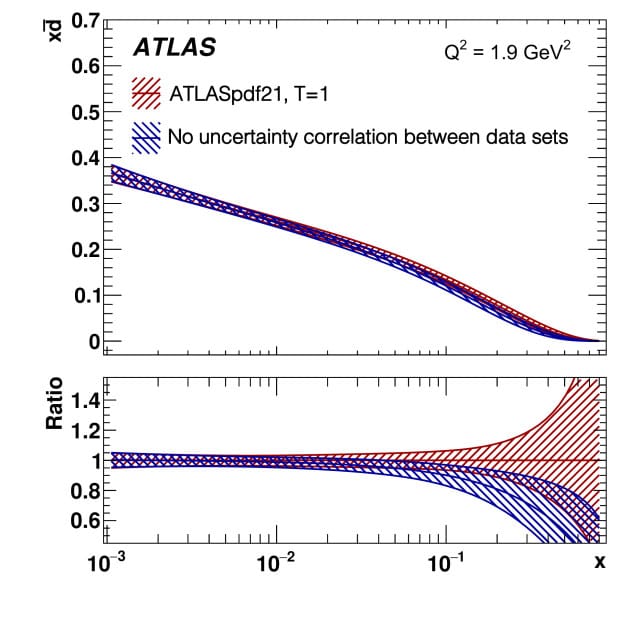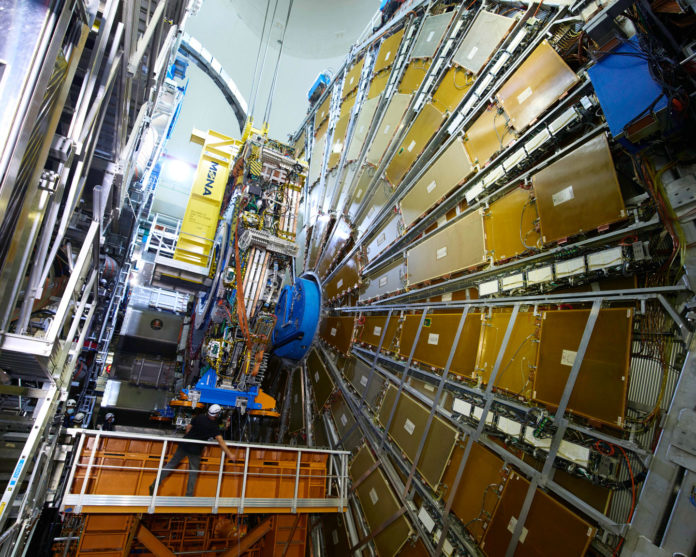Precise knowledge of the content of protons, the Parton distribution functions (PDFs), is a necessary ingredient for accurate predictions of both Standard Model (SM) and beyond-the-SM (BSM) cross-sections at the Large Hadron Collider (LHC). Information on PDFs has traditionally come from lepton-proton colliders, like HERA at DESY.
The Lepton-proton colliders use point-like particles, such as electrons, to probe the partons directly. Their study revealed that there is also a sea of other quark-antiquark pairs in the proton with the presence of quarks. This sea consists of all types of quarks, bound together by gluons.
In a new study, ATLAS collaboration combined LHC and HERA data to determine PDFs. The data includes several different Standard Model processes, including the production of W and Z bosons, pairs of top quarks, and hadronic jets.
The results confirm the previous study: the strange quark isn’t significantly stifled at small proton momentum fractions. The team also shows how suppression contributes to higher momentum fractions (x > 0.05), as shown in Figure 1.

The results of most studies that work to understand PDFs are generally in agreement. There has been some difference at the high-momentum fraction (x > 0.1) that could affect high-energy searches for physics beyond the Standard Model. What’s more, it makes it clear that a better understanding is required at mid-range momentum fractions (x ~ 0.01–0.1). This would require knowledge of PDFs to an accuracy of ~1%.
The new study suggests that the accuracy of PDFs relies on better knowledge of the systematic uncertainties of the input data. The team also assesses the correlations of such uncertainties between their datasets and accounts for them.
The impact of such correlations can shift the central values of the PDFs by > 1% in the mid-range momentum region. The effect could be large in the high-x region.

Scientists noted, “Such knowledge was not previously available outside ATLAS, making this result a new “vademecum” for global PDF groups.”
Journal Reference:
- The ATLAS Collaboration. Determination of the Parton distribution functions of the proton using diverse ATLAS data from ? ? collisions at √ ? = 7, 8, and 13 TeV. arXiv:2112.11266
